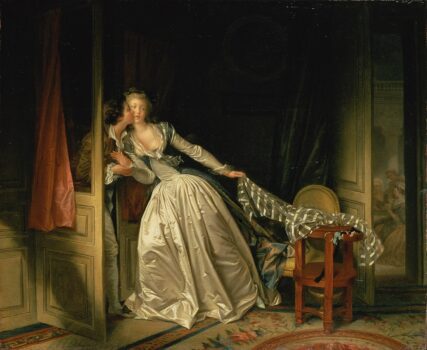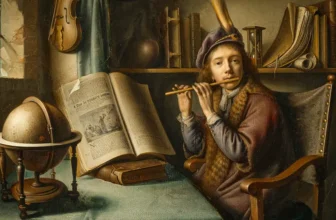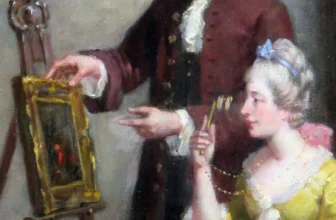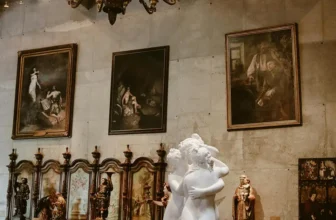An Intimate Journey into Fragonard’s The Stolen Kiss Painting
Shopping Ads: Antique Oil Paintings On Canvas For Sale. Limited Originals Available 💰😊
Authentic hidden masterpieces, Explore old master antique oil paintings from the Renaissance and Baroque eras. From 15th-century to 18th-century Antique Paintings. Bring the Renaissance and Baroque in your home. Shop Now!
🎨 Antique Oil Paintings On Canvas Renaissance, Baroque Art Antique Oil Paintings, Make Offer 16th to 18th Century Portrait Paintings
In the annals of European art history, few paintings capture the spirit of secrecy, intimacy, and the quiet pulse of passion quite like Jean-Honoré Fragonard’s The Stolen Kiss. More than a delicate Rococo masterpiece, this painting is a narrative, a poem in oils, a whisper in color and light. Created in the late 18th century, it continues to captivate viewers with its layered symbolism, exquisite technique, and the tantalizing ambiguity of what has just occurred, or what is about to.
But what exactly is happening in The Stolen Kiss? What does it mean? What artistic currents does it belong to? And where can one view this clandestine moment today?
Let’s slip behind the silk curtain of history, passion, and brushstroke to unravel the secrets of Fragonard’s iconic painting.
A Glimpse into the Artist’s World: Who Was Jean-Honoré Fragonard?
Before diving into the narrative of the painting itself, it helps to understand the mind behind the masterpiece. Jean-Honoré Fragonard (1732–1806) was a French painter known for his exuberant and often playful Rococo style. He was a pupil of François Boucher and drew heavy influence from the sensual and decorative aesthetic that defined mid-18th century French aristocratic culture.
Fragonard was especially skilled at capturing fleeting moments, those ephemeral flickers of emotion, attraction, and mood that feel universal yet intensely personal. His works often featured lovers, secret meetings, mythological flirtations, and lush, dreamlike scenery. He painted not only what the eyes could see, but what the heart could feel, whispering stories with his brush that spoke of youth, desire, secrecy, and spontaneity.
The Setting and the Scene: What Is Happening in The Stolen Kiss?
The Stolen Kiss is nothing short of a frozen moment in a romantic drama. The scene unfolds in a richly decorated interior, likely a private room in an aristocratic household. The painting centers on a young couple caught in an intimate act, a kiss stolen in a moment of daring and affection.
A woman, dressed in a sumptuous cream gown, has clearly left a formal gathering in another room. The open door reveals a glimpse of company, perhaps family or guests, seated in a well-lit salon. She has slipped away and leaned backward, partially concealed by a curtain, into the embrace of a young man who waits in the shadows of a more private room. Their kiss is hurried, secretive, and stolen.
The composition is deliberately theatrical. Every element, from the soft folds of her dress to the distant candlelight in the background, adds tension and narrative depth. There is both guilt and glee in the woman’s posture, she looks backward, toward the light, perhaps checking to see if anyone noticed her departure. The man leans forward, entirely enraptured, pulling her gently toward him. A chair has been knocked over, hinting at the rushed nature of the scene.
This is not a kiss of ceremony, it is impulsive, driven by passion and youthful secrecy. The viewer becomes a voyeur, a silent witness to a deeply personal moment.
What Is the Meaning Behind The Stolen Kiss?
On the surface, the painting tells a simple story: a kiss shared in secret. But as with most great art, deeper meanings lie beneath.
At its core, The Stolen Kiss is a meditation on desire, discretion, and the nature of intimacy in a rigidly formal society. In 18th century France, particularly among the aristocracy, relationships were often bound by duty and arranged marriages. Public life was governed by decorum, but private lives often danced to different rhythms. Fragonard’s painting is a commentary on that duality.
The “stolen” nature of the kiss speaks to the thrill of rebellion, of passion daring to bloom in the cracks of social expectation. It could also suggest the fragility of such intimacy, how easily it can be discovered and destroyed. The act of stealing implies risk, and Fragonard masterfully captures the tension between pleasure and peril.
On a broader philosophical level, the painting hints at the fleeting nature of time and love. The moment is brief and fragile, here one second, gone the next. It is the kind of beauty that cannot be preserved, only witnessed and remembered.
Artistic Style: Rococo Romance and Technical Brilliance
The Stolen Kiss is a quintessential Rococo painting, a genre that flourished in France during the early to mid-18th century. Rococo was characterized by its elegance, lightness, and use of soft pastels and curved lines. It often explored themes of love, nature, playfulness, and aristocratic leisure.
Fragonard was a master of the Rococo idiom, and The Stolen Kiss showcases his virtuosity. The luxurious textures of the fabrics, the subtle interplay of light and shadow, and the graceful composition all reflect the style’s hallmarks.
Unlike the grand historical narratives of the Baroque era that preceded Rococo, this painting zeroes in on the personal and the private. Yet its detail and emotional depth give it gravitas. The golden tones, the glinting surfaces, the soft brushwork, all serve to create a dreamlike quality, a world where emotions are elevated and space becomes poetic.
The painting’s layout is almost cinematic. The viewer’s eye is guided from the formal salon in the background, through the open door, across the girl’s curved body, and finally into the dim embrace of the kiss. It feels like a story told in a single frame, a still from a romance film centuries before the invention of cinema.
Symbolism and Visual Clues
Fragonard’s works are often rich with symbolism, and The Stolen Kiss is no exception.
The Doorway: Acting as a literal and symbolic threshold, the open door separates the public from the private. It’s a liminal space, the boundary between societal duty and personal desire.
The Overturned Chair: This small but telling detail speaks volumes. It suggests haste, disorder, and perhaps the impulsiveness of the moment. Something has been disrupted, physically and emotionally.
The Curtain: Partially drawn, it obscures the lovers and adds a sense of mystery. It’s a metaphor for secrecy, and also for the idea that intimacy is something both hidden and sacred.
The Woman’s Backward Glance: Her posture speaks to both fear of discovery and the thrill of transgression. She is torn between the world she came from and the moment she now inhabits.
Each element, while visually delightful, also deepens the emotional and psychological resonance of the scene.
Cultural and Historical Context: Love in the Age of Enlightenment
Created in a time just before the French Revolution, The Stolen Kiss also reflects the societal structures of its day. The French aristocracy lived lives of opulence, often removed from the hardships of common people. Their intrigues, romances, and secrets were fodder for gossip and literature alike.
This was also the Age of Enlightenment, a period when reason, science, and individualism began to challenge traditional authority. Romantic love, as an ideal, was increasingly explored in philosophy and art. Fragonard’s painting taps into this shift. It isn’t just depicting a romantic scene, it’s celebrating emotion, spontaneity, and the human heart’s power to defy convention.
At the same time, it’s worth noting that such expressions of desire were still safely encased in a veneer of aristocratic elegance. The painting may hint at rebellion, but it does so within the lush framework of Rococo refinement.
Where Is The Stolen Kiss Today?
For those who wish to see this romantic masterpiece in person, The Stolen Kiss currently resides in the Hermitage Museum in St. Petersburg, Russia. It is part of one of the largest and most prestigious art collections in the world.
The Hermitage, housed in the historic Winter Palace, offers a breathtaking setting for this quiet scene of passion. To view The Stolen Kiss is to take a step back in time, into a moment suspended between love and loss, light and shadow, seen and unseen.
Legacy and Influence: Why The Stolen Kiss Still Matters
Centuries after its creation, The Stolen Kiss continues to inspire artists, writers, and romantics alike. Its emotional power lies in its ambiguity and relatability. We’ve all experienced moments of tension between duty and desire, secrecy and honesty, fear and longing.
The painting has also influenced how intimacy is portrayed in visual art. By focusing on a small, stolen gesture, Fragonard elevates the ordinary to the extraordinary. He reminds us that love does not always announce itself with grand declarations, sometimes it arrives in a glance, a touch, a fleeting kiss in the dark.
In an age of digital connection and public performance, the privacy and stillness of The Stolen Kiss feels especially poignant. It speaks to the universal need for connection, the courage to defy expectation, and the beauty of moments that cannot be repeated.
The Eternal Whisper of a Kiss
Fragonard’s The Stolen Kiss is more than a beautiful painting, it is a story, a mystery, a moment held gently in time. It invites the viewer to imagine, to interpret, and to feel. Through soft color and sharp emotion, it captures a world that is both distant and deeply familiar.
In this stolen kiss, we see not just two lovers, but the eternal human dance between risk and reward, fear and desire, tradition and rebellion. And perhaps that is why, centuries later, this painting continues to stir hearts and captivate minds.
To stand before The Stolen Kiss is to lean into its secrets, to glimpse, if only for a second, the powerful truth behind a simple, stolen gesture of love.




